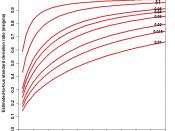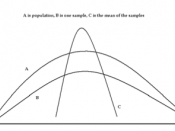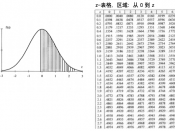Question 1
Delia Martin has $10,000 that she can deposit in any of three savings accounts for a 3-year period. Bank A compounds interest on an annual basis, bank B compounds interest twice each year and Bank C compounds interest each quarter. All three banks shave a stated annual interest rate of 4 percent.
a)What amount would Ms Martin have at the end of the third year leaving all interest paid on deposit in each bank?
Bank A (principal+ interest)10,000 x 1.04^ 3=$11248.64
Bank B(principal+ interest)10,000 x 1.02%^6=$11261.62
Bank C(principal+ interest)10,000 x 1.01^12=$11268.25
So, Bank A interests: 11,248.64-10,000=$1,248.64
Bank B interests: 11,261.62-10,000=$1,261.62
Bank C interests: 11,268.25-10,000=$1,268.25
b) What effective annual rate (EAR) would she earn in each of the banks?
Bank AFor bank A compounds interest on an stated annual basis, thus, its annual interest rate is 4%.
Bank B1+4%/22-1=4.04%
Bank C1+4%/44-1=4.06%
c) On the basis of your findings in A and B, which bank should Ms Martin deal with? Why?
I suggest Ms Martin to choose bank C.
Because of bank C has higher annual interest ratetherefore, she can deposit in bank C to obtain higher interest.
d) If a fourth bank -Bank D, also with a 4percent stated interest rate - compounds interest continuously, how much would Ms Martin have at the end of the third year? Does this alternative change your recommendation in c? Explain why or why not?
If deposit in bank D, Ms Martin could gains interest plus principal as below
10000 x 2.7183x0.04 =$11274.83
This result would be affecting the suggestion in question C. Because compound interest will accrue continuously based on the generated interest in a certain term plus principal, and thus, Ms Martin could receiving more interest if she deposits in bank D.
Q2- You have been asked for your advice in...


